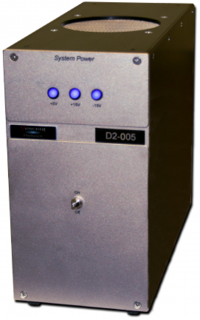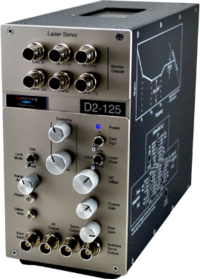Vescent Family
D2-105 Laser Controller
Notes
8/14 We were having issues with the current slightly fluctuating and eventually even the current and temperature setpoints. We contacted Vescent who told us this can happen when the temperature PID isn't tuned quite right. We retuned it which seemed to fix the problem.
D2-005 Power Supply
D2-125 Reconfigurable Laser Servo
Advice from Vescent:
Josh --
It is hard to measure the transfer function as shown on the side panel. The transfer function is the open loop response. If you use the servo open loop, the output will almost certainly hit the rail because you have infinite DC gain. So typically, you close the loop. You can do this with some very quiet, slow 'test' plant the effectively only gives DC feedback to keep the servo from railing. (This is what we do internally to test our servos). Typically, you want to measure it closed loop with your actual laser in the loop. When you do this, the transfer function is the ratio of the Servo Output to the AC Error Input Monitor. But where there is high gain in the feedback, there is (hopefully) very little Error Input so it can be hard to measure that ratio. Also you are measuring the entire closed loop transfer function, not just the servo, but also the laser, spectroscopy and anything else in the loop. Personally, I just look at the AC Error monitor and try to minimize that (looking on a spectrum analzyer). As you decrease the gain, you can see what the almost unservoed (weak gain) error is and then was you tune up the gain and the poles, you can see how much noise they are taking out of your signal. And you can see gain peaking when the servo gain is high and getting near the point of oscillation. Again, that is the loop including the laser, spectroscopy, etc, but if you minimize that, you are minimizing your error, which is what you are about.
I hope this helps,
Ben
"Ben Luey" <bluey@vescent.com>


